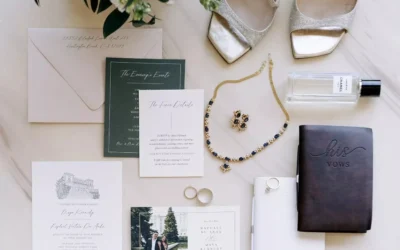Planning a wedding can feel like an emotional rollercoaster filled with endless to-dos—especially at the beginning. The excitement of getting married often comes with one big question: where do I even start? If you’re asking yourself that, you’re not alone. This guide is for you, someone who wants to organize their wedding with clarity, calm, and joy (without losing their mind in the process). Here’s a practical, step-by-step breakdown of how to plan your wedding from scratch—with strategy, realism, and excitement.
Is it worth planning your wedding on your own?
The first decision to make is whether you’ll handle everything yourselves or delegate parts of the process. Many couples start thinking they can manage it all, but quickly discover the sheer volume of tasks, decisions, vendors, and logistics can be overwhelming. Planning a wedding takes time, coordination, and experience. That’s why more and more couples recognize the value of having a professional by their side—especially when they understand the benefits of hiring a wedding planner early on in the process.
1. Define the type of wedding you want
Before asking for quotes, trying on dresses, or looking at venues, it’s essential to define the kind of wedding you both envision. Formal or casual? Religious or civil? Indoors or outdoors? Big or intimate? This foundational step will shape every other decision. Knowing your vision from the start helps you filter choices and stay aligned throughout the planning process.
2. Set a realistic budget
Money is without a doubt one of the biggest factors in wedding planning. Defining what you can or want to spend early on is key to avoiding stress, surprises, and overspending. Start with a rough estimate and then break it down into categories (venue, catering, dress, photography, decor, etc.). Having a clear reference for how much a wedding planner costs in Spain can help you adjust your overall budget with realistic expectations.
3. Choose a date (and season)
Choosing a date sets the tone for everything else: vendor availability, overall style, and even pricing. Spring and autumn weddings are most in demand, which often means higher prices. If you’re aiming for peak season, it’s best to start planning at least a year in advance. Also consider whether you prefer a weekday or weekend wedding, as that can affect logistics and cost.
4. Draft your first guest list
Even if it’s not final, an initial guest list helps you understand the size and scale of your celebration. A wedding for 40 people is very different from one for 180. This number affects your budget, venue options, and overall logistics. It also helps you decide whether you want the ceremony and reception in one place or separate locations.
5. Search and book your venue
Once you’ve defined the date, style, and approximate guest count, it’s time to choose the venue. This step should happen early, as popular venues often get booked a year or more in advance. Consider the location, style, included services, indoor/outdoor options, weather backups, and of course, your budget.
6. Consider hiring a wedding planner
At this point, many couples realize how many decisions and tasks lie ahead. If you don’t want to compromise on quality but also don’t want to feel overwhelmed for months, now might be the time to think about hiring a wedding planner. This person can help plan everything, save you time and stress, and avoid costly mistakes. From finding vendors to coordinating the big day, a professional can make a major difference. If you’re unsure, you can always reach out via our contact page—we’d love to help.
7. Create a timeline and prioritize
Once you’ve locked in the basics (date, venue, guest list), it’s time to map out a timeline. List tasks in order of priority and assign target dates to each. For example: when to shop for the dress, when to book your photographer, when to send out invitations, and so on. Having this roadmap helps avoid last-minute rushes and keeps everything on track.
8. Book key vendors as early as possible
Not all vendors require the same lead time, but there are a few you should lock in quickly: photographer, catering, music, and decor. Many only take on one wedding per day, so early booking is essential. Top vendors often fill up quickly. Compare quotes, review portfolios, and confirm your dates as soon as you can.
9. Think about decor, style, and small details
Once the basics are covered, it’s time to get creative—choose your wedding style, decor, and all the personal touches that will make your celebration unique. Color palettes, flowers, seating charts, favors, special songs… Let your imagination run free, but stay mindful of your budget and keep everything cohesive. If you’re working with a planner, this part will feel more fluid and focused thanks to their experience and input.
10. Enjoy the process without losing your mind
It may seem like obvious advice, but it’s the most important. Many couples get overwhelmed trying to get everything just right, and they forget to enjoy the journey. Your wedding should be a reflection of who you are, not a showcase for others. Prioritize what truly matters to you, delegate what’s beyond your control, and don’t lose sight of the essential: you are celebrating love. If at any time you feel stuck or lost, remember you can count on our team. Just contact us and we’ll help you plan the wedding of your dreams.
Conclusion: Yes, plan your wedding—but do it strategically
Wedding planning doesn’t have to be chaotic. With good preparation, a clear vision, and the right support, you can enjoy the process and create a celebration you’ll remember forever. There’s no one-size-fits-all formula. These steps are a starting point—adapt them to your rhythm, your story, and your dreams. And if you choose to work with a professional, the entire journey will feel even smoother, more creative, and free of unnecessary stress.
______________________
Did this guide help you? 💬 Let us know in the comments how your planning process is going. We’d love to hear from you and support you along the way!



